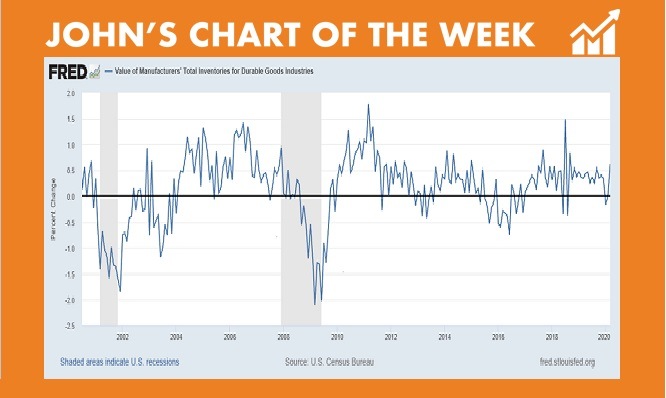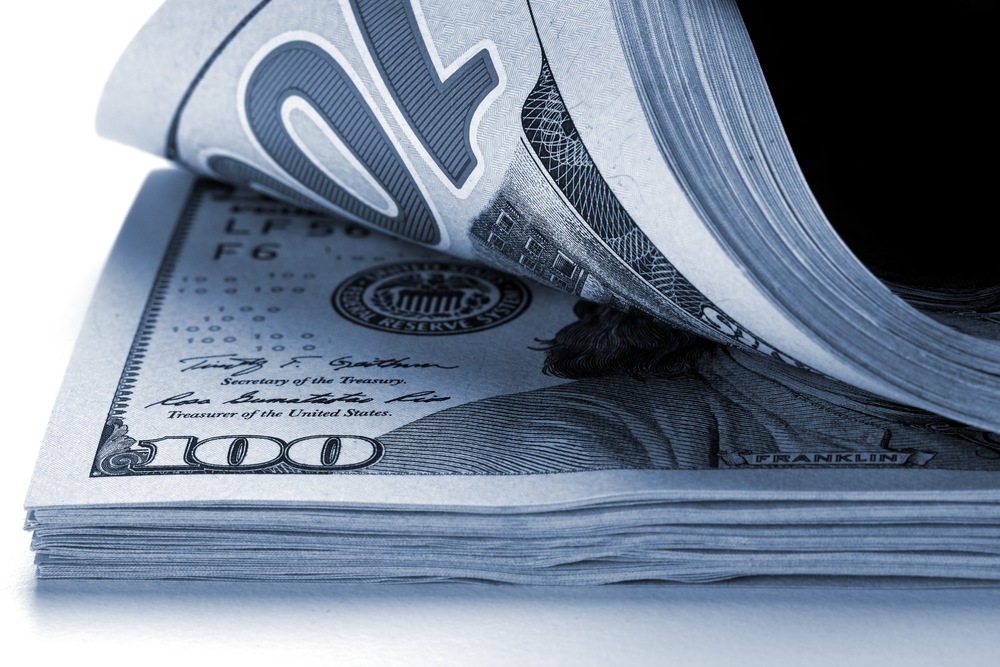A few weeks ago, I told you about my buddy Mark. He owns a business, and the pandemic forced him to close shop.
He was prepared to never reopen the doors of his company.
But Mark was quick. He received financial assistance via the first round of the Small Business Administration Paycheck Protection Program.
Now Mark’s company has a backlog of orders to fulfill when production restarts.
Other companies aren’t so fortunate … they won’t return to normal production levels for a while.
My Chart of the Week tells us the recession will wreak havoc on the economy — and especially a certain category of stocks.
Investors should avoid these stocks. But nimble traders can use them to double their money in weeks at a time.
Companies Are Slow to Work Through Inventories in Recession

The value of durable goods inventories — the stuff that doesn’t perish or get used up right away — falls during a recession.
The blue line in the chart represents inventories. The gray areas indicate recessions.
March’s inventory bump was not due to increased production.
In fact, production of durable consumer goods dropped 18% in March, the deepest dive in at least 70 years.
Rather, the drop was due to the disappearance of demand when the world went on lockdown and tens of millions filed for unemployment.
Durable goods orders collapsed 14% in March.
Falling Inventories Will Work Against GDP
The data above is for March. April’s data will begin arriving in the coming days.
So, you may be inclined to think this is old news, that the stock market has already priced it in.
But you do so at your own risk.
Inventory growth in March added to U.S. gross domestic product (GDP) in the first quarter. But inventories will fall now as the recession drags on.
Falling inventories will work against GDP in the second quarter.
And since demand for these goods is not going to return overnight, production and new orders will work against second-quarter GDP too.
Producers and manufacturers have a long, slow recovery ahead of them. There is more pain to come between now and whenever their businesses get back to normal.
The Industrial Select Sector SPDR Fund (NYSE: XLI) holds a basket of stocks with exposure to the goods side of the U.S. economy.
These stocks already trade at a discount to the broad market for reasons stated above.
But they’re going to trade at an even deeper discount soon.
Investors should stay away from these stocks until after inventories, production and orders show signs of a bottom.
In the meantime, active traders can use the coming declines in these stocks to make quick profits.
XLI-held stocks such as Union Pacific Corp. (NYSE: UNP), Boeing Company (NYSE: BA) and Caterpillar Inc. (NYSE: CAT) are triggering sell signals this week.
And my system turns these sell signals into what I call “buys on red.”
Using put options, buy-on-red trades benefit when stocks go down. These buys provide the chance to earn more than 100% on individual trades with short time frames (a few weeks).
If you want to learn more about how my system generates buy-on-red opportunities — and how you can make money while markets are crashing — check out this presentation!
Good investing,
Editor, Apex Profit Alert
